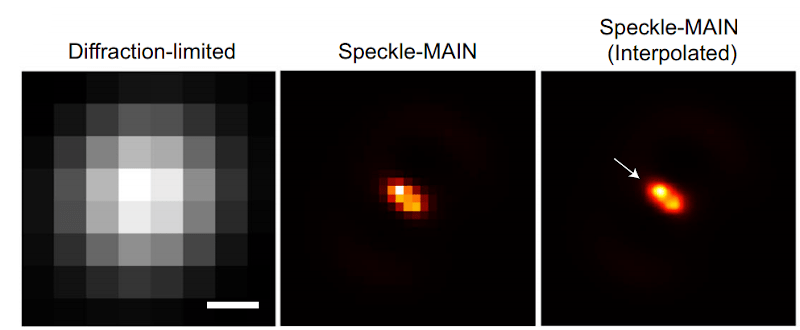
Optical microscopes depend on light, of course, but they are also limited by that same light. Typically, anything under 200 nanometers just blurs together because of the wavelength of the light being used to observe it. However, engineers at the University of California San Diego have published their results using a hyperbolic metamaterial composed of silver and silica to drive optical microscopy down to below 40 nanometers. You can find the original paper online, also.
The technique also requires image processing. Light passing through the metamaterial breaks into speckles that produce low-resolution images that can combine to form high-resolution images. This so-called structured illumination technique isn’t exactly new, but previous techniques allowed about 100-nanometer resolution, much less than what the researchers were able to find using this material.
The technique requires a conventional microscope along with a 1-watt laser and a fiberoptic collimator. A digital camera collects the optical data for processing. While a laser used to be exotic, these days a 1W laser isn’t especially hard to acquire. If you could figure out how to get or make the metamaterial, this looks like something you could possibly replicate in your basement.
The university has been doing work in this area for a while. In 2018. they showed similar methods resolving down 80 nanometers. Sure, a scanning electron microscope can resolve around 10 nanometers, but having to put your specimen in a vacuum chamber and irradiate it poses difficulties for some kinds of samples.
While it might not have the same resolution, your 3D printer can become a microscope. Or if you want to really image atoms, try building an atomic force microscope.
0 Commentaires